
Collective art
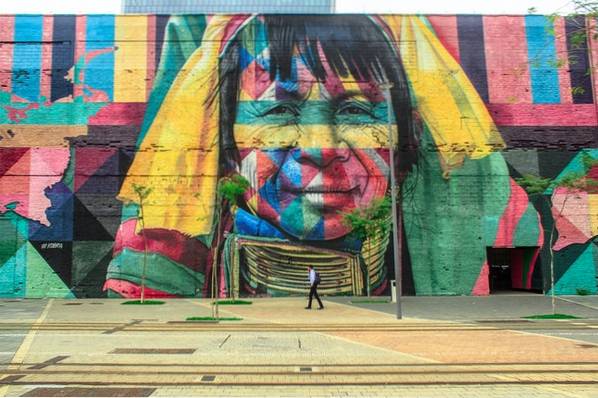
Collective art refers to the union of a group of artists, from two to many more. This union is made with the intention of collaborating between the same artists to generate one or more artistic works.
Generally, the artists who come together to create a collective work of art often share political, social or cultural thoughts or ideas, and their works express great content of these ideals.
On the other hand, in most cases, artistic groups do not usually work motivated by an economic purpose, but most of their works are non-profit..
Characteristics of collective art
Some of the most important characteristics of collective art are the following:
Ideology compatibility
People who join or form artistic collectives tend to unite under the same ideology or way of thinking. These can be political, social or economic ideologies, among others.
Uniformity of technique
Most of the works made by artistic collectives have the particularity of having a technical uniformity, so that no type of particular feature of an artist is distinguished, but they seem to be made only by one person.
Disciplines
A work carried out by an artistic collective can be made by a single discipline, or by several at the same time.
Therefore, a collective work of art can be expressed through an artistic installation, or it can also be exhibited through sculpture, music or dance, among other techniques, either using a single discipline or mixing several..
Non profit
Most people who join artistic groups do not do so for financial reasons, but to express their ideas together with other artists who think in the same way..
Validity
Most artistic collectives tend not to last over time, generally the artists who participate in a collective work of art tend to be involved only for one work, and once it is finished, they dissociate themselves..
Techniques in collective art
The techniques used for the realization of a collective work of art are various.
In addition, each of these techniques can be composed solely of a particular artistic language, such as music or painting, or combine two or more different artistic languages in the same work. In this way, different artists with skills in different artistic languages can be brought together and merged to create a single work..
Here are some of the most used techniques in collective art:
Artistic installation
The artistic installation is a technique where a certain space is used to create the work. This space can be a living room, the walls, the floor, or even a place outside..
In this type of technique, sometimes the viewer is part of the work, being able to interact with it.
In its beginnings, in the sixties, this type of works were temporary, that is, they were presented in a certain place for a pre-established amount of time and then dismantled. However, today some of these art installations are permanent..
Mural painting
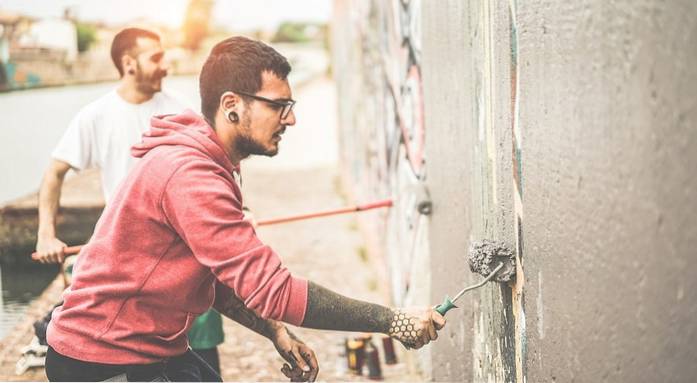
Mural painting is one of the most used techniques, both by collective art and by solo artists. Basically it is a painting made on a wall, whether of a building, a house or any other place.
Mural painting is used by artists from an artistic collective, in most cases to reflect some kind of thought or feeling about a particular subject in society. In addition, they usually represent tragic episodes that have occurred in the community..
This is done, among other reasons, as a way to install a particular issue in society, and that it can be reflected on..
Performance
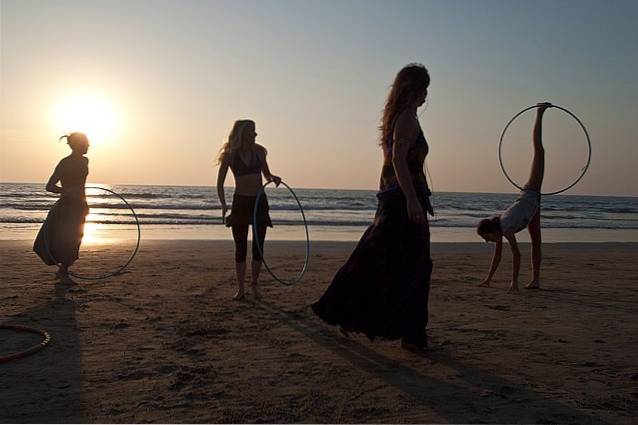
It is an artistic discipline in which the artist or artists try to generate a reaction in the viewer. These interventions can be given in museums, art galleries or even on the street, and are generally temporary and spontaneous presentations..
Using performance or artistic action, an artistic collective can expose its thoughts to society, making social criticisms that make the viewer think.
Collective art in Mexico
Collective art in Mexico has its beginnings during the late 60's and early 70's, within a very agitated social and political context..
The year 1977 was one of the most important in the beginnings of Mexican collective art, since its participation in the X Biennial of Young People in Paris, with a work with a strong political content, attracted much attention from the general public..
From that moment, collective art in Mexico grew and added new artists, who developed a new language through experimentation with different materials and artistic supports..
One of the points of union of all the groups of collective art was the fact of being critical, either on a political or social level or on the artistic system..
This tradition of collective art continues to be used to this day in Mexico, with artists who come together to create a particular work and then separate, or with artistic collectives that have been working together for a long time..
Examples of collective art works and their artists
Here are some examples of collective art works and their artists.
Sight
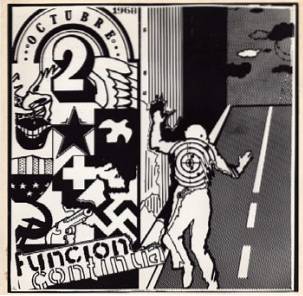
Mira was a group of artists who created various works of collective art in the 70s in Mexico. The group was made up of Melecio Galván, Rebeca Hidalgo, Arnulfo Aquino and Jorge Perezvega.
This group made removable graphic works which they called “graphic communications”, and which they installed in schools, unions and popular neighborhoods..
In his works, the topics that were dealt with were of a social nature, such as repression, power, poverty and violence, among others..
Cobra
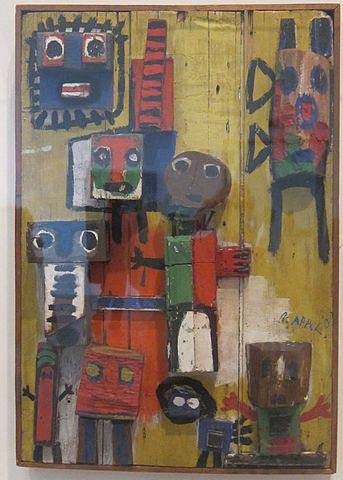
The CoBrA movement was created in France at the end of World War II, and lasted between 1948 and 1951. Its name refers to three of the cities of its most important founding members, Copenhagen, Brussels and Amsterdam..
Its founders, Asger Jorn, Karel Appel and Pierre Corneille, along with other artists such as Christian Dotremont, created the group in opposition to Western art, which was at that time the center of world art..
This artistic collective praised the primitive art style, such as that made by children, and, in addition, they reconsidered surrealism.
Guerrilla Girls
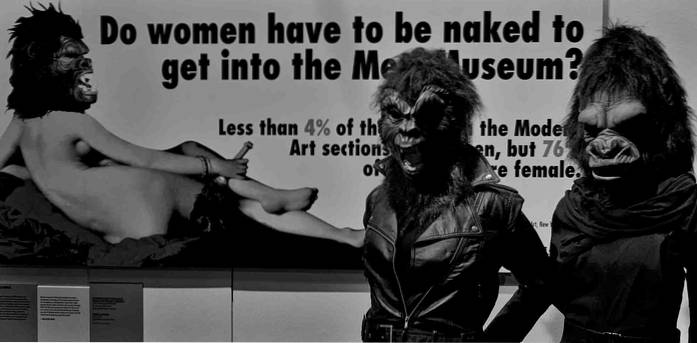
This anonymous collective led by feminist artists was founded in 1985, and has lived up to its name for using guerilla art strategies to propel the women's art movement..
The group often wears gorilla masks, fishnet stockings and miniskirts, iconic symbols of their movement and communications..
They state that no person, not even their families or partners, know their identities, refusing to confess the total number of women that make up their team; It is believed that it was made up of some 20 or 30 artists. Their proposals are based on actions, posters and billboards.
Gelitin
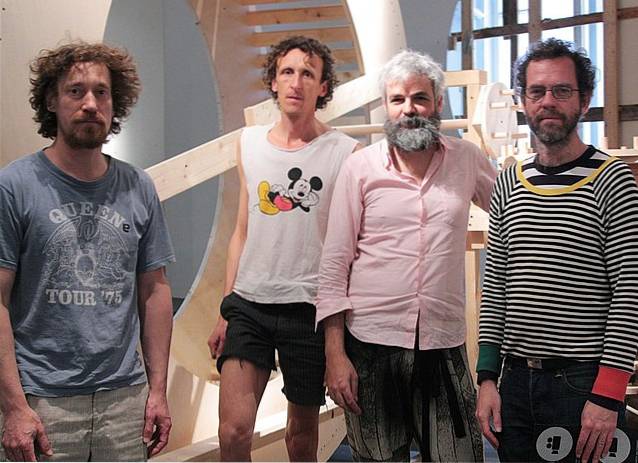
This collective is made up of 4 Austrian artists who met in 1978 and who began to be noticed thanks to their hard work in the early 90s..
Until 2005 they kept the name Gelatin (gelatin), to later change to Gelitin. His proposal is based on large-scale actions, installations and interventions of spaces that differ from each other in scale and ambition. They are characterized by being subversive and tend to involve the public in their actions.
A sample of his work is the work Zap of Pipi (2005) in which they created a giant icicle with frozen urine samples from visitors to the Moscow Biennale.
One of Gelitin's best known works is Hase, a 55-meter pink rabbit installed on a hill in Tuscany, Italy, which will remain on site until 2025.
Archigram
It was an avant-garde architecture group established in the 1960s that focused on a futuristic, pro-communist, anti-hero and highly technology-inspired proposal..
The group explored space capsules, images of mass consumption, survival, offering a seductive perspective on the future of machines in which social and environmental issues were omitted, transforming reality into their own language..
His works served as inspiration for other artists and technology projects. One of his best known works is The Walking City (1964), which consisted of giant living elements that resembled a mixture between machines and insects that could travel through cities, behind all a situational foundation.



Yet No Comments